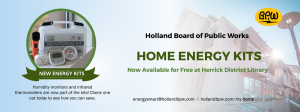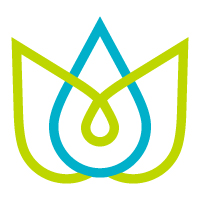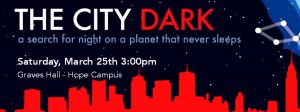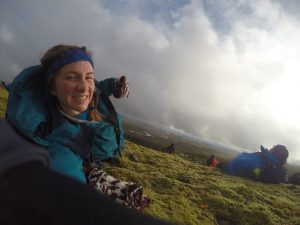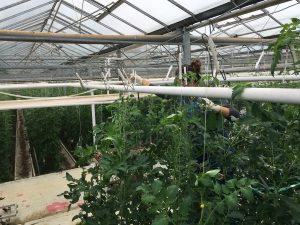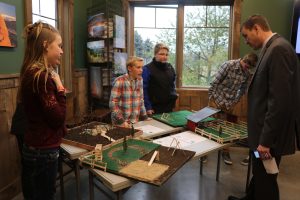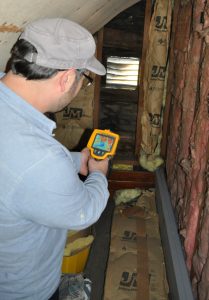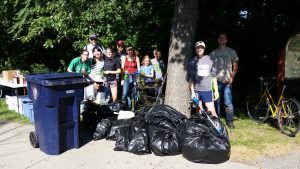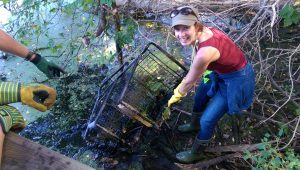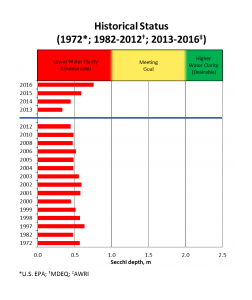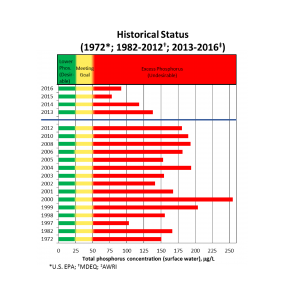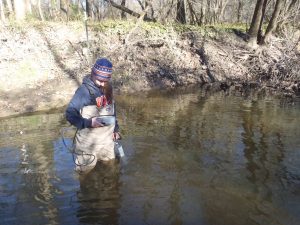LIVING SUSTAINABLY
Pop Quiz: Do You Know Your Home Place?
By Steve Bouma-Prediger
How well do you know your place – your geophysical place, your neighborhood, your home?
If we don’t know our home place well, then we won’t 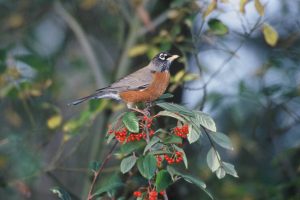 know how to responsibly care for it. Or, lacking the love born of knowledge, we might not even want to care for it.
know how to responsibly care for it. Or, lacking the love born of knowledge, we might not even want to care for it.
Here is a short quiz I give my students to illustrate how well we know our place.
The first time that I took a quiz like this years ago, I was embarrassed by how poorly I did. But I vowed that I would learn more about whatever place I lived in, to know how to properly care for it. May we all come to better know and love this beautiful piece of our home planet – Holland, Michigan – so that we might join together joyfully and gratefully in our care for it.
So try the quiz for ideas of things to know about your place.
Answers are below – but no peeking now!
Questions
1. How many days until the moon is full?
2. What are three agricultural plants grown in Ottawa and Allegan counties? What are three edible wild plants in this part of our home planet?
3. How long is the growing season here in the Holland area?
4. What are five trees that grow near your house? Where is the closest Michigan state tree?
5. What are five birds that make their home near your home?
6. What primary geological event or process has shaped Michigan?
7. What spring flower is consistently the first to bloom where you live?
8. If the stars were out last night, what was one constellation you could have seen?
9. What are five non-human creatures who share your place?
10. How has the land here been used by humans in the last 200 years?
Bonus Questions
a. Where does the water you drink from your tap come from?
b. Where does your garbage go?
Answers
1. The moon was full on Saturday, Feb. 11, and will be full again on Sunday, March 12.. The lunar cycle is 28 days, with our moon going from full to waning gibbous to waning crescent to new (invisible) to waxing crescent to waxing gibbous to full again. A blue moon, as in the phrase, “Once in a blue moon,” is a second full moon in the same month.
2. The most common agricultural plants in our area are corn and soybeans, though we locals also are very proud of our blueberries and apples. The list of edible wild plants is quite long and will vary by individual preference, but some of the more common ones are wild onion, cranberries, blueberries, hazelnuts, fiddlehead ferns, and morel mushrooms.
3. The growing season (from last frost to first frost) is about 185 days long, though it varies some each year. Some years you can harvest asparagus in May and kale in November. The growing season is longer in Holland than in other regions of the state because of the warming effect of Lake Michigan. The growing season is now 20 days longer than in 1970.
4. There are many trees that make the Holland area their home, but some of the most common are maple, beech, oak, pine, hemlock, and spruce. The northern ash trees, alas, are falling to the emerald ash borer and trees that need a colder climate, e.g. some species of birch, are migrating north. The Michigan state tree is the white pine (pinus strobus), a lovely tree with long (3- to 5-inch) needles in bundles usually of five.
5. As with the previous question about trees, there are many right answers to this question. The robin is the Michigan state bird, though a class of 4 th graders at a Michigan school some years ago proposed to the governor that it be changed to the chickadee, since the chickadee stays in state year around while the robins leave us in the winter when we need them most. Birds commonly spotted in and around water include Canada geese, mallards, herring gulls (the common seagull), great blue herons, redwing blackbirds. Backyard birds include finches, robins, bluejays, swallows, bluebirds, sparrows, downy woodpeckers. Various hawks live (and hunt) in city parks, such as red-tailed hawks, coopers hawks.
6. The most recent geological event was the receding of the glaciers, which carved out much of Michigan’s landscape. The Great Lakes are a result of the movement and melting of glaciers over millions of years, the most recent ice age ending about 12,000 years ago. The famous mitten shape of our state is a result of glaciers, so the next time you use your hand to show someone where you live, remember you have the glaciers to thank.
7. Many in Holland may be tempted to say that the first spring flower to bloom is the tulip, but that would be incorrect. While the tulip is Holland’s most famous flower, prior to the tulip comes the blooming of the daffodil, and even before that, often pushing up the snow, is the aconite, the bloodroot, the crocus, and the trillium.
8. The night sky looks different in the winter than in the summer, and only the most committed folks stargaze in February. But some familiar constellations are still there: the Big Dipper, the Little Dipper (which has Polaris the North Star on the end of its handle), Draco the Dragon, Cassiopeia the Queen, Cephus the King. And especially clear in the winter, if you look south about halfway above the horizon, is Orion the Hunter, which contains two of the brightest stars in the sky—Rigel and Betelgeuse. In the summer many people recognize directly above them the Summer Triangle of stars Altair, Deneb, and Vega, which are part of the constellations Aquila, Cygnus, and Lyra, respectively.
9. Many right answers are possible with this question. You could share your home with mice, spiders, bats, dogs, cats, fish, horses, chinchillas, crickets—the list of non-human creatures is nearly endless. Adolescent children, however, do not count.
10. The land in the greater Holland area has been used by humans in many ways for many purposes. Perhaps the most obvious uses are for agriculture and housing, but the land – and water – have also been used for fishing and transportation, education and recreation, hunting and foraging. The list goes on. How will we use it in the next 200 years? Will we use it wisely and respectfully, with the needs of our children and grandchildren in mind? With the needs of our non-human neighbors in mind?
Bonus Answers
a. If you live in the City of Holland or in one of the townships that gets their water from the Board of Public Works, then your water comes from Lake Michigan, pumped from the Big Lake into the filtration and treatment plant just acress the street from Tunnel Park. If your water does not come from the BPW, then most likely it comes from a well. We tend to take water for granted here in Michigan, but in many parts of the world water scarcity and water impurity are big problems.
b. If you live in the City of Holland, your garbage and recycled material is collected once a week by Chef Container and goes to their sorting plant on Graafschap Road south of town. Garbage goes into a landfill while the recyclable material is sorted and sold. Waste Management handles the trash and recycling material for many others in the Holland area. Their sorting plant and landfill is east of town on 16 th /Adams Street.
Photo
Cutline: American Robin jpg – Your neighbors in your home place might include the robin, Michigan’s state bird.
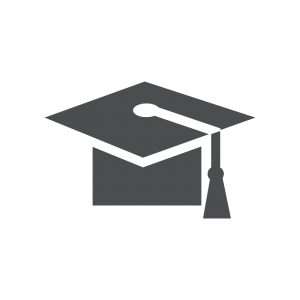 This Week’s Sustainability Framework Theme
This Week’s Sustainability Framework Theme
Community Knowledge: The collective knowledge and energy of the community is an incredible resource that must be channeled to where it is needed.
ABOUT THIS SERIES
Living Sustainably is a collection of community voices sharing updates about local sustainability initiatives. It is presented by the Holland-Hope College Sustainability Institute, a joint project of Hope College, the City of Holland, and Holland Board of Public Works. Go to www.hope.edu/sustainability-institute for more information



